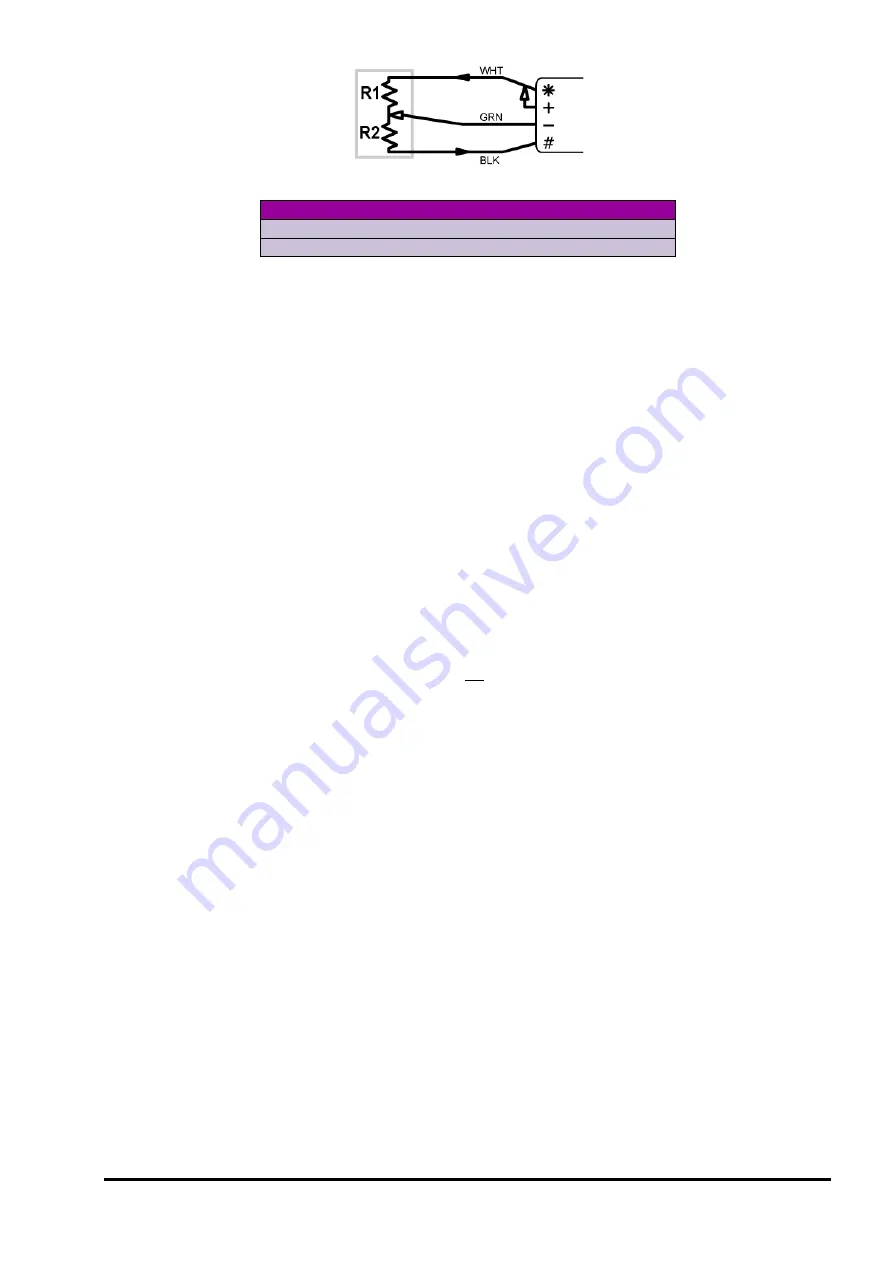
UM-0085-B09
DT80 Range User Manual
Page 329
RG
Figure 153: Wiring for 3-wire Carlson Sensor
To measure
Use the command
R1
1R(4W,II,
Rc
)
R2
1-R(II,
Rc
)
Calculating Temperature and Strain
Temperature
The temperature is given by:
𝑇
=
�
(
𝑅
1
− 𝑅
2
)
− 𝑏�𝑎
where:
•
T
is the temperature (°C)
•
R
1
and
R
2
are the measured resistance values (Ω)
•
b
is the temperature offset: total resistance at 0°C (Ω) (supplied by manufacturer)
•
a
is the temperature factor: change in temperature per unit change in total resistance (°C/ Ω) (supplied by
manufacturer). In some cases different factors may be supplied for different temperature ranges, e.g. one for
above 0°C and one for below.
This temperature can then be used to correct the stress or strain calculation.
Strain and Stress
In general terms, strain (or stress) is proportional to the change in the ratio R1/R2 relative to some base value, less a
correction for expansion due to temperature.
The precise form of the equation for calculating stress/strain will depend on the application and the actual data supplied
by the Carlson meter manufacturer. The formula will normally be similar to:
𝑠𝑡𝑟𝑎𝑖𝑛
=
𝐺 �
𝑅
1
𝑅
2
− 𝑍� − 𝐶𝑇
where:
•
G
is the calibration factor: change in indicated strain per unit change in resistance ratio (supplied by
manufacturer). This constant is typically specified as µε/0.01%, i.e. microstrain per 0.01% ratio change. For a
stress meter the calibration factor units will be different, e.g. kPa/0.01%.
•
R
1
and
R
2
are the measured resistance values
•
Z
is the "zero" resistance ratio. A value of "R1/R2 at 0°C" may be supplied by manufacturer, or an initial
measurement of R1/R2 can be made soon after installation, which will form the zero point for subsequent strain
values.
•
C
is the temperature correction factor: change in indicated strain per unit change in temperature (may be
supplied by manufacturer) This constant is typically specified as µε/°C, i.e. microstrain per °C.
•
T
is the temperature, as calculated above.
















































